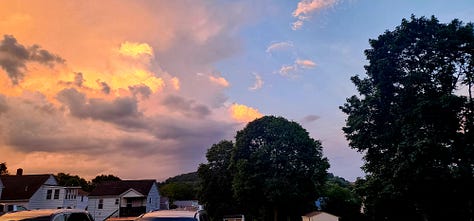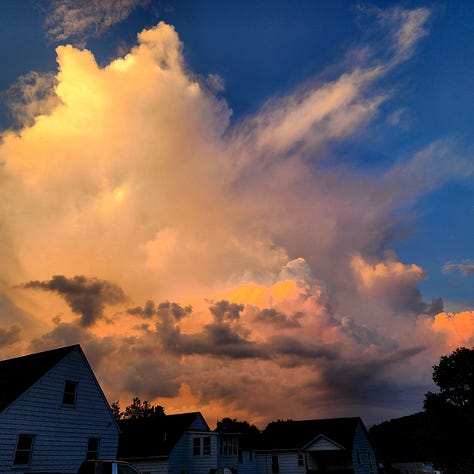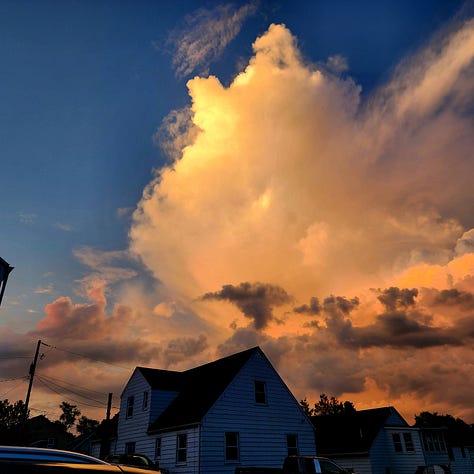It’s not that I don’t like Pennsylvania. I mean, P A. It’s more that I was raised and lived a large chunk of my adult life in deserts. With wide open spaces. Conifers. Cacti. And desaturation. Lots and lots of desaturated colors. Beautiful, muted, chromatic grays.
P A is more like living in a sink. And there are trees everywhere. And people. You can’t throw a rock and not hit a borough or village or convent. And vibrant greens are everywhere thanks to thick, woolly, deciduous trees.
Honestly, it’s all quite claustrophobic for me, even after nearly 15 years. I miss the feeling of driving from Phoenix to Tucson, knowing that if you broke down, there was no civilization for at least 50 more miles, and that nature would likely kill you if the heat didn’t. Break down in P A, you just need to walk in any direction for a few seconds and you’ll bump into an Anabaptist-owned farm.
And yet.
As I pulled into my driveway tonight, I saw this magnificent vision1:






These were all taken with my cell phone the second I got out of my car. They do not do it justice whatsoever. I wanted to get my big boy camera and take a picture or 500, so I turned to go in the house to retrieve said camera. As I hurried to my back door, I peeked over my shoulder for another look, and the entire sky had changed. It was no longer interesting. No longer compelling. No longer striking. It was just another P A “we may have a thunderstorm, but probably not, but don’t let your guard down” evening.
And I was saddened.
Robert Henri, in a 1915 letter to the students of the Art Students League, wrote2:
The most vital things in the look of a face or of a landscape endure only for a moment. Work should be done from memory. The memory is of that vital moment. During that moment there is a correlation of the factors of that look. The correlation does not continue. New arrangements, greater or less, replace them as mood changes. The special order has to be retained in memory—that special look, and that order which was its expression. Memory must hold it. All work done from the subject thereafter must be no more than data gathering. The subject is now in another mood. A new series of relations has been established. These may confound. The memory of that special look must be held, and the “subject” can now only serve as an indifferent manikin of its former self. The picture must not become a patchwork of parts of various moods. The original mood must be held to. The artist sees only that in the model which may help him to build up the look he would record. … He chooses only from the appearance before him that which relates to his true subject—the look which first inspired him to work. That look has passed and it may not return.
“Light is sweet, and it is pleasant for the eyes to see the sun.”3
Also, a “bit too on the nose” demonstration of the power and effect of contrasting (aka, complimentary) colors in action.
Emphasis added.
Ecclesiastes 11:7, English Standard Version





I often don't have my camera (phone) with me when I see wonderful things. I used to lament these moments, but now I just remind myself that not everything was meant to be photographed; some things are meant to be just enjoyed.
This is so well-written and true to the art-making process as well as to just living life. How lovely to wake up and start another "it's not the heat, it's the humidity" day in PA by reading this!